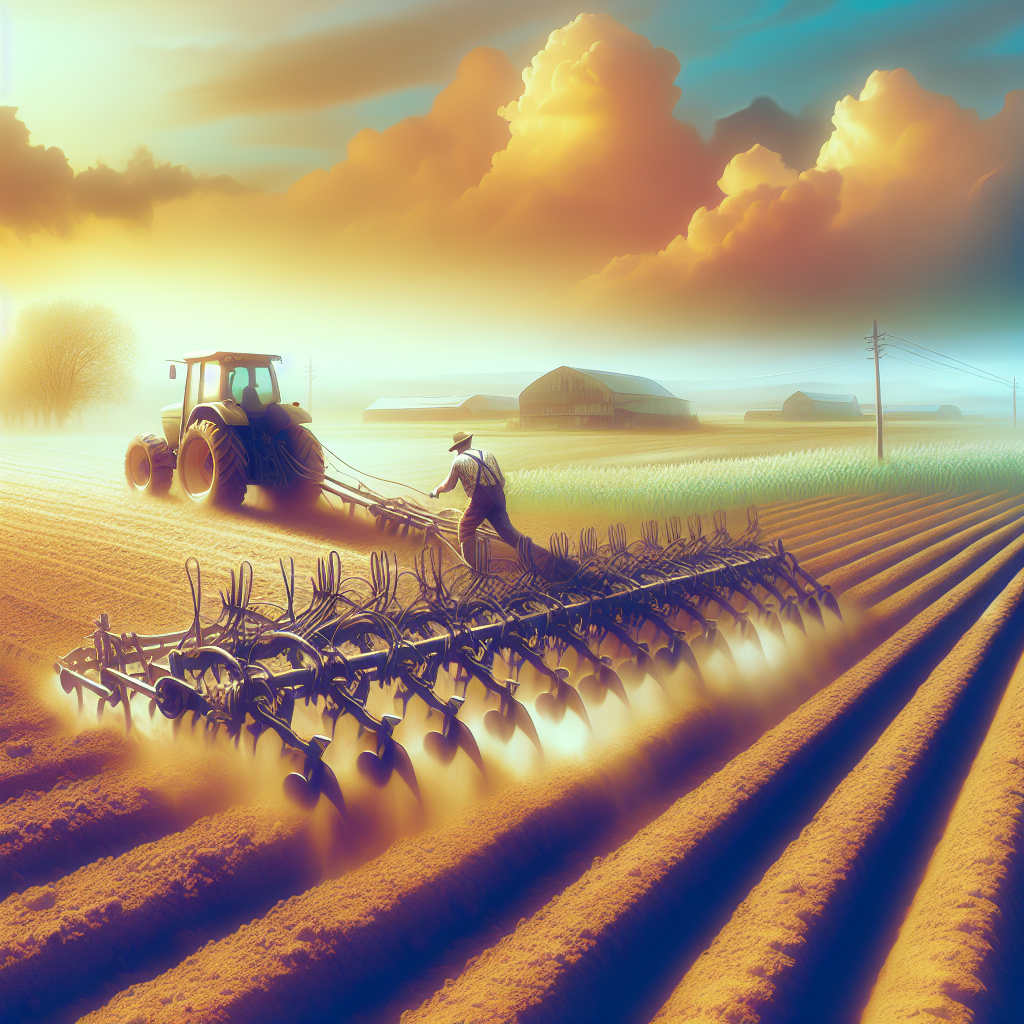Soil erosion is a significant concern for farmers, especially when dealing with light soils. Proper plowing techniques can help mitigate this issue, ensuring that the soil remains fertile and productive. This article will provide essential tips on how to avoid soil erosion during plowing in light soils.
Understanding Soil Erosion and Its Impact
Soil erosion is the process by which the top layer of soil is removed by natural forces such as wind and water. This phenomenon can be particularly problematic in light soils, which are more susceptible to erosion due to their loose and sandy texture. The loss of topsoil can lead to reduced soil fertility, lower crop yields, and increased vulnerability to drought and other environmental stresses.
Causes of Soil Erosion
Several factors contribute to soil erosion, including:
- Water Runoff: Heavy rainfall can cause water to flow over the soil surface, carrying away the topsoil.
- Wind: In areas with little vegetation, strong winds can lift and transport soil particles over long distances.
- Human Activities: Poor agricultural practices, deforestation, and overgrazing can exacerbate soil erosion.
Consequences of Soil Erosion
The impact of soil erosion extends beyond the loss of fertile land. It can also lead to:
- Water Pollution: Eroded soil can carry pesticides and fertilizers into water bodies, contaminating them.
- Reduced Agricultural Productivity: The loss of nutrient-rich topsoil can result in lower crop yields.
- Increased Flood Risk: Eroded soil can clog waterways, reducing their capacity to handle heavy rainfall.
Effective Plowing Techniques to Prevent Soil Erosion
Implementing the right plowing techniques is crucial for preventing soil erosion in light soils. Here are some strategies to consider:
Contour Plowing
Contour plowing involves plowing along the natural contours of the land rather than in straight lines. This method helps to slow down water runoff and encourages water infiltration into the soil. By following the land’s natural shape, contour plowing reduces the risk of soil erosion and promotes better water retention.
Strip Cropping
Strip cropping is a technique where crops are planted in alternating strips with cover crops or fallow land. This method helps to break up the flow of water, reducing erosion and promoting soil stability. The cover crops also add organic matter to the soil, improving its structure and fertility.
Reduced Tillage
Reducing the frequency and intensity of tillage can help to maintain soil structure and reduce erosion. No-till or minimum-till practices leave crop residues on the soil surface, protecting it from wind and water erosion. These residues also help to retain moisture and provide a habitat for beneficial soil organisms.
Cover Crops
Planting cover crops during the off-season can help to protect the soil from erosion. Cover crops, such as clover, rye, or vetch, provide ground cover, reducing the impact of raindrops on the soil surface and preventing wind erosion. They also improve soil health by adding organic matter and nutrients.
Terracing
Terracing involves creating stepped levels on a slope to reduce water runoff and soil erosion. This technique is particularly effective on steep slopes, where water can quickly wash away topsoil. Terraces slow down the flow of water, allowing it to infiltrate the soil and reducing the risk of erosion.
Additional Tips for Managing Light Soils
In addition to the plowing techniques mentioned above, there are several other practices that can help manage light soils and prevent erosion:
Maintaining Soil Organic Matter
Adding organic matter to light soils can improve their structure and water-holding capacity. Compost, manure, and cover crops are excellent sources of organic matter. Regularly incorporating these materials into the soil can enhance its fertility and reduce erosion.
Implementing Windbreaks
Windbreaks, such as rows of trees or shrubs, can help to reduce wind speed and protect soil from wind erosion. Planting windbreaks around the edges of fields or in strategic locations can create a barrier that reduces the impact of strong winds on the soil surface.
Mulching
Applying mulch to the soil surface can help to protect it from erosion. Mulch, such as straw, wood chips, or grass clippings, provides a protective layer that reduces the impact of raindrops and wind on the soil. Mulching also helps to retain soil moisture and suppress weeds.
Proper Irrigation Management
Over-irrigation can lead to water runoff and soil erosion. Implementing efficient irrigation practices, such as drip irrigation or using soil moisture sensors, can help to ensure that water is applied evenly and at the right amount. Proper irrigation management reduces the risk of erosion and promotes healthy plant growth.
Conclusion
Preventing soil erosion in light soils requires a combination of effective plowing techniques and additional soil management practices. By implementing strategies such as contour plowing, strip cropping, reduced tillage, cover crops, and terracing, farmers can protect their soil from erosion and maintain its fertility. Additionally, practices like maintaining soil organic matter, implementing windbreaks, mulching, and proper irrigation management can further enhance soil stability and productivity. By taking these steps, farmers can ensure the long-term health and sustainability of their land.
